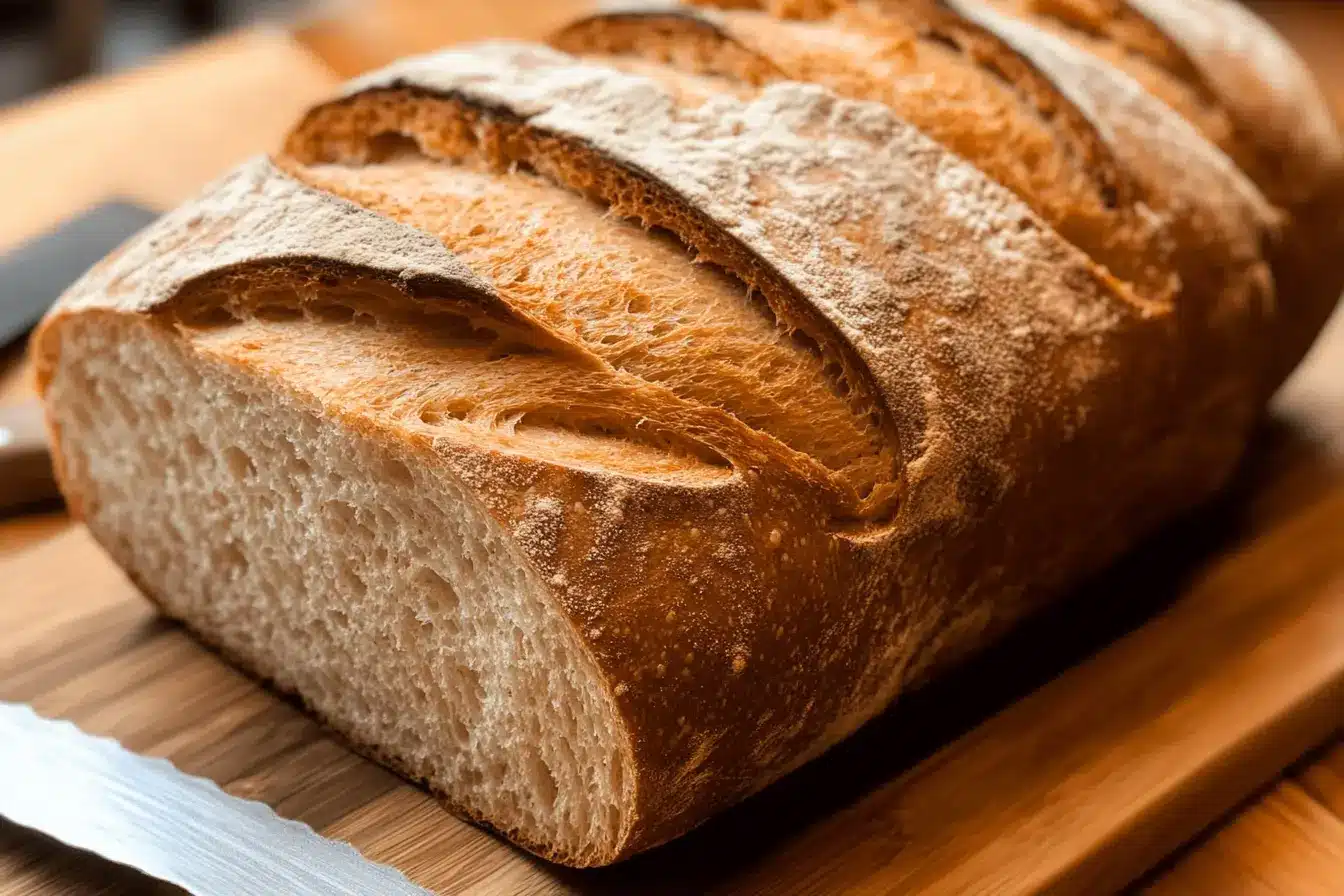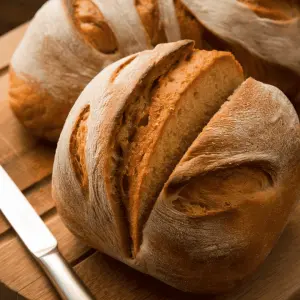Attention all bread lovers! Are you looking for a healthier alternative to your favorite bread recipes without compromising on taste? Look no further than our delicious low sodium bread recipe! By reducing your sodium intake, you can enjoy the many health benefits associated with a low sodium diet while still indulging in the comfort and satisfaction of freshly baked bread. In this article, we’ll explore the reasons behind choosing low sodium bread, provide you with a variety of tasty recipes, and share helpful tips and techniques for baking the perfect loaf every time. Get ready to embark on a flavorful journey that will change the way you think about bread!

Why Low Sodium?
Consuming too much sodium can have serious health implications, such as increased risk of high blood pressure, heart disease, and stroke. By opting for low sodium alternatives, you can significantly reduce these risks and improve your overall well-being. Low sodium diets have been shown to lower blood pressure, reduce water retention, and even help with weight management. When it comes to bread, making your own low sodium varieties at home allows you to control the amount of salt added while experimenting with other flavorful ingredients that can enhance the taste and texture of your loaves.
Basic Low Sodium Bread Recipe
Ingredients:
– 3 cups all-purpose flour
– 1 tbsp sugar
– 1 tsp active dry yeast
– 1 1/4 cups warm water
– 2 tbsp olive oil
Instructions:
- In a large bowl, mix the flour, sugar, and yeast.
- Gradually add the warm water and olive oil, stirring until a dough forms.
- Knead the dough on a floured surface for about 10 minutes until smooth and elastic.
- Place the dough in an oiled bowl, cover, and let rise in a warm place for 1 hour.
- Punch down the dough, shape into a loaf, and place in a greased 9×5 inch loaf pan.
- Cover and let rise for another 30 minutes.
- Preheat the oven to 375°F (190°C) and bake for 30-35 minutes until golden brown.
Tip: To add flavor without salt, try incorporating herbs like rosemary, thyme, or oregano into the dough.
Low-Sodium Sourdough Bread
Ingredients:
– 1 cup active sourdough starter
– 3 cups bread flour
– 1 cup warm water
– 1 tbsp sugar
– 1 tbsp olive oil
Instructions:
- In a large bowl, mix the sourdough starter, flour, water, sugar, and olive oil until a dough forms.
- Knead the dough on a floured surface for about 15 minutes until smooth and elastic.
- Place the dough in an oiled bowl, cover, and let rise in a warm place for 4-6 hours.
- Punch down the dough, shape into a loaf, and place in a greased 9×5 inch loaf pan.
- Cover and let rise for another 1-2 hours.
- Preheat the oven to 400°F (200°C) and bake for 35-40 minutes until golden brown.
Note: Sourdough bread naturally has a lower pH level, which can help enhance flavor without the need for added salt.
Low Sodium Wheat Bread
Ingredients:
– 2 cups whole wheat flour
– 1 cup all-purpose flour
– 1 tbsp sugar
– 1 tsp active dry yeast
– 1 1/4 cups warm water
– 2 tbsp olive oil
Instructions:
- In a large bowl, mix the whole wheat flour, all-purpose flour, sugar, and yeast.
- Gradually add the warm water and olive oil, stirring until a dough forms.
- Knead the dough on a floured surface for about 12 minutes until smooth and elastic.
- Place the dough in an oiled bowl, cover, and let rise in a warm place for 1 hour.
- Punch down the dough, shape into a loaf, and place in a greased 9×5 inch loaf pan.
- Cover and let rise for another 30 minutes.
- Preheat the oven to 375°F (190°C) and bake for 30-35 minutes until golden brown.
Tip: To balance flavors in wheat bread without salt, experiment with adding dried fruits, nuts, or seeds to the dough.
Low Sodium No-Knead Bread
Ingredients:
– 3 cups all-purpose flour
– 1/4 tsp active dry yeast
– 1 1/2 cups warm water
– 1 tbsp olive oil
Instructions:
- In a large bowl, mix the flour and yeast.
- Add the warm water and olive oil, stirring until a shaggy dough forms.
- Cover the bowl with plastic wrap and let sit at room temperature for 12-18 hours.
- Preheat the oven to 450°F (230°C) and place a Dutch oven with a lid inside to heat.
- Carefully remove the hot Dutch oven, line with parchment paper, and transfer the dough into it.
- Cover and bake for 30 minutes, then remove the lid and bake for an additional 15 minutes until golden brown.
Advantage: The no-knead method allows for a longer fermentation time, which helps develop flavor without the need for salt.
Low Sodium Irish Soda Bread
Ingredients:
– 4 cups all-purpose flour
– 1 tsp baking soda
– 1 tbsp sugar
– 1 3/4 cups buttermilk
Instructions:
- Preheat the oven to 425°F (220°C) and line a baking sheet with parchment paper.
- In a large bowl, mix the flour, baking soda, and sugar.
- Gradually add the buttermilk, stirring until a dough forms.
- Turn the dough out onto a floured surface and knead gently for 1-2 minutes.
- Shape the dough into a round loaf and place on the prepared baking sheet.
- Using a sharp knife, cut a deep ‘X’ into the top of the loaf.
- Bake for 30-35 minutes until golden brown and the loaf sounds hollow when tapped on the bottom.
Tip: For added texture and flavor, try incorporating dried herbs or grated cheese into the dough.
Baking Tips for Low Sodium Bread Recipe
– Use alternative ingredients to enhance flavor: Experiment with herbs, spices, garlic, onion, or citrus zest to add depth and complexity to your low sodium bread.
– Ensure good texture and rise without salt: Be precise with your measurements, knead the dough well, and allow sufficient time for rising to achieve a pleasing texture.
– Avoid common mistakes: Don’t overwork the dough, as this can lead to tough bread. Also, be sure to preheat your oven and bake at the correct temperature for the best results.
Understanding Low Sodium Bread Recipe Ingredients
– Role of salt in traditional bread recipes: Salt not only adds flavor but also helps control yeast growth, strengthens gluten, and enhances the color and crust of the bread.
– Substitutes and their effects: While there is no perfect substitute for salt, using ingredients like herbs, spices, and aromatics can help compensate for the lack of salt in low sodium bread.
– Importance of other key ingredients: High-quality flour, fresh yeast, and proper hydration are crucial for achieving the best texture, rise, and flavor in your low sodium bread.
Low Sodium Bread Recipe Q&A
- How can I make my bread taste better without salt?
- Use herbs, spices, garlic, onion, or citrus zest to add flavor complexity.
- Experiment with different flours, such as whole wheat or rye, for added depth.
- Incorporate dried fruits, nuts, or seeds for texture and flavor.
- Can I use different types of flour in low sodium bread?
- Yes, you can use whole wheat, rye, spelt, or other flours in your low sodium bread recipes.
- Keep in mind that different flours may require adjustments in liquid content and rising times.
- How do I store low sodium bread to keep it fresh?
- Allow the bread to cool completely before storing.
- Place the bread in a paper bag or wrap it in a clean kitchen towel.
- Store at room temperature for 2-3 days, or freeze for longer storage.
- What are the best low sodium yeast brands?
- Most yeast brands do not contain significant amounts of sodium.
- Look for active dry yeast or instant yeast for the best results in low sodium baking.
- Can I use a bread machine for low sodium bread?
- Yes, most bread machine recipes can be adapted for low sodium versions.
- Consult your bread machine manual for specific instructions on ingredient ratios and cycle settings.
Conclusion
Baking low sodium bread at home is a delicious and healthy way to enjoy your favorite bread recipes while reducing your sodium intake. By experimenting with alternative ingredients, mastering key techniques, and following our tasty recipes, you’ll be well on your way to creating the perfect low sodium loaves. Remember to have fun, be creative, and savor the satisfaction of baking your own nutritious and flavorful bread. Happy baking!

